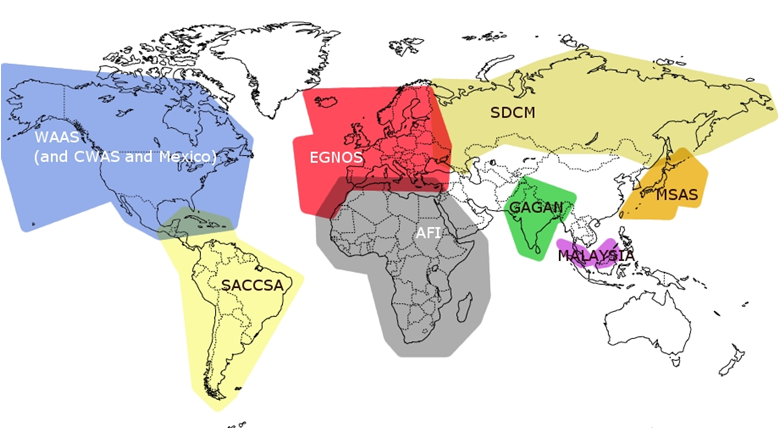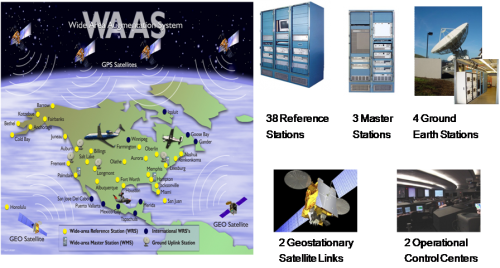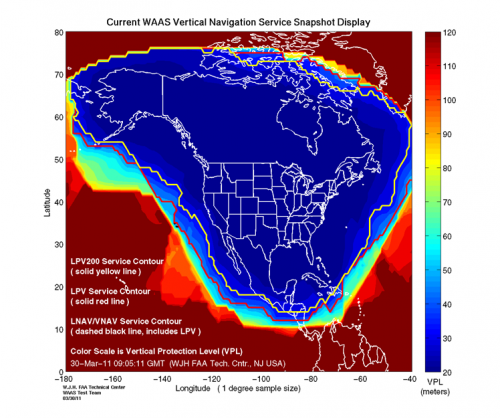If you wish to contribute or participate in the discussions about articles you are invited to contact the Editor
SBAS Systems: Difference between revisions
No edit summary |
No edit summary |
||
| Line 37: | Line 37: | ||
==GAGAN== | ==GAGAN== | ||
The GPS Aided Geo Augmented Navigation or GPS and Geo Augmented Navigation system (GAGAN) is the SBAS implementation by the Indian government. The Indian government states that it will use the experience of building the GAGAN system in the creation of an autonomous regional navigation system called the Indian Regional Navigational Satellite System (IRNSS).<ref name="GAGAN WIKI"/> | |||
The following figure provides an overview of the actual GAGAN architecture.<ref name="GAGAN WIKI">[http://en.wikipedia.org/wiki/GPS_Aided_Geo_Augmented_Navigation GPS Aided Geo Augmented Navigation] | |||
The final, operational phase of GAGAN is likely to be completed in 2011.<ref name="GAGAN WIKI"/> | |||
==SDCM== | ==SDCM== | ||
Revision as of 23:43, 31 March 2011
| Fundamentals | |
|---|---|
| Title | SBAS Systems |
| Author(s) | GMV |
| Level | Basic |
| Year of Publication | 2011 |
SBAS systems are spreading out all over the world. More and more, it is believed that upon dual-frequency SBAS service provision, a seamless navigation will be possible from and to any two locations in the world.
From all the SBAS systems in the world, three are already operational –WAAS, MSAS, EGNOS– , two are under implementation –GAGAN, SDCM– while the rest are under feasibility studies –SACCSA, AFI.
WAAS
The WAAS was jointly developed by the United States Department of Transportation (DOT) and the Federal Aviation Administration (FAA), beginning in 1994, to provide performance comparable to category I instrument landing system (ILS) for all aircraft possessing the appropriately certified equipment.[1]
The following figure shows an overview of the WAAS system.
On July 10, 2003, the WAAS signal was activated for safety-of-life aviation, covering 95% of the United States, and portions of Alaska.[1] At present, WAAS supports en-route, terminal and approach operations down to a full LPV-200 (CAT-I like Approach Capability) for the CONUS, Mexico and Canada.
MSAS
The Multi-functional Satellite Augmentation System (MSAS) is the Japanese SBAS. NEC manufactured and delivered MSAS under contract with the Civil Aviation Bureau, Ministry of Land, Infrastructure, Transport and Tourism.
The following figure depicts the MSAS architecture:
MSAS is operational since 2007 supporting en-route, terminal and non-precision approach operations (RNP 0.1). Recently has completed successful LPV flight trials.
GAGAN
The GPS Aided Geo Augmented Navigation or GPS and Geo Augmented Navigation system (GAGAN) is the SBAS implementation by the Indian government. The Indian government states that it will use the experience of building the GAGAN system in the creation of an autonomous regional navigation system called the Indian Regional Navigational Satellite System (IRNSS).[2]
The following figure provides an overview of the actual GAGAN architecture.<ref name="GAGAN WIKI">GPS Aided Geo Augmented Navigation
The final, operational phase of GAGAN is likely to be completed in 2011.[2]
SDCM
SACCSA
The SBAS initiative in South/Central America and the Caribbean is called SACCSA - Soluciόn de Aumentaciόn para Caribe, Centro y Sudamérica -. SACCSA is an ICAO project founded by the Participants/Member States of the SACCSA Project: Argentina, Bolivia, Colombia, Costa Rica, Guatemala, Panama, Spain, Venezuela and COCESNA (Corporación Centroamerica de Servicios de Navegación Aérea). The objective is to study the improvement of the Air Navigation Environment in the Caribbean and South America (CAR/SAM) Regions with a SBAS solution. The program began in 2003 being at present in its Phase III which will determine the feasibility of the implementation of an own SBAS system in the CAR/SAM regions.
Notes
References
- ^ a b Wide Area Augmentation System
- ^ a b Cite error: Invalid
<ref>tag; no text was provided for refs namedGAGAN WIKI




